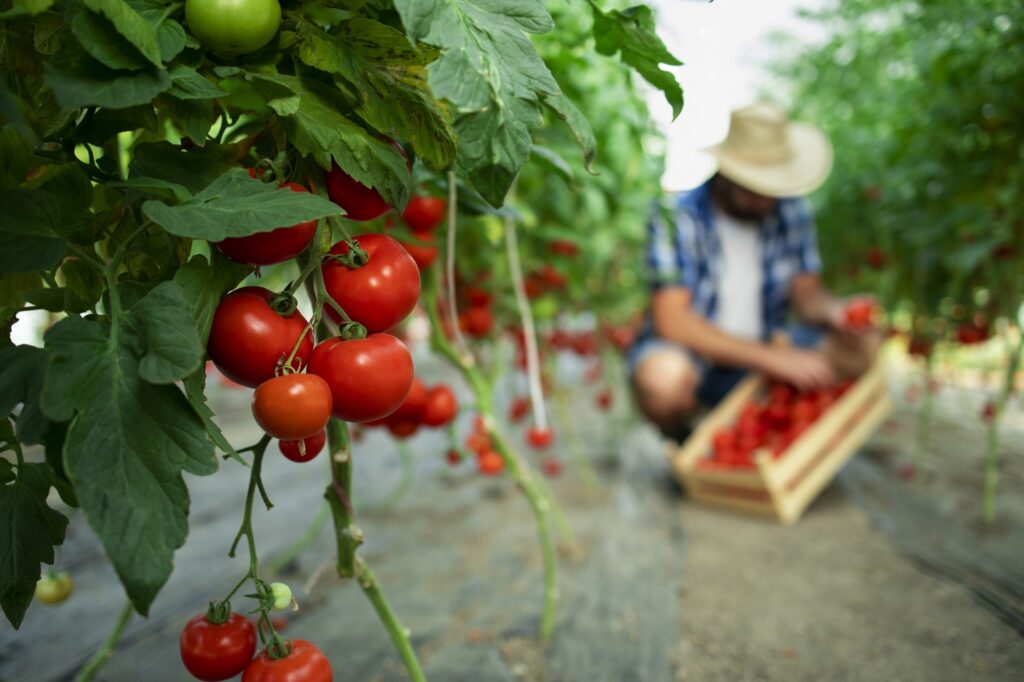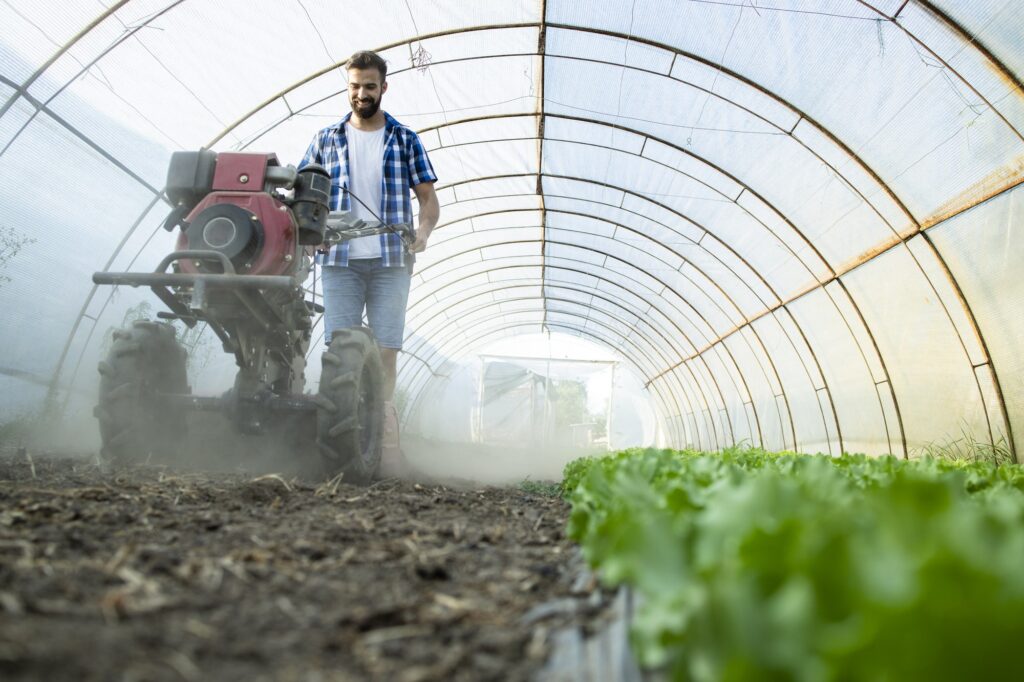Agriculture has been the backbone of human civilization for thousands of years. Over time, farming practices have evolved, driven by both necessity and technological advancements. As the global population continues to grow, the need for more efficient, sustainable, and innovative farming methods has never been greater. From the adoption of precision farming techniques to the exploration of alternative proteins, the future of agriculture is set to transform not only how we grow food but how we interact with the planet itself.
In this article, we’ll explore some of the most advanced trends and technologies revolutionizing the agricultural sector, paving the way for smarter, more sustainable food production systems.
1. Precision Agriculture: A New Era of Data-Driven Farming
Precision agriculture is an advanced farming practice that uses modern technologies to monitor and manage field variability in crops. It integrates the use of data analytics, GPS systems, sensors, and automated machinery to make more accurate decisions, increase crop yields, and reduce resource wastage.
- Sensors and IoT Devices: By employing soil moisture sensors, temperature probes, and even drones, farmers can gather real-time data from their fields. These sensors help farmers make informed decisions about irrigation, fertilization, and pest control.
- GPS and Drones: GPS technology helps create precise maps of fields, while drones provide aerial imagery to monitor crop health and detect early signs of pests or diseases.
- Data Analytics: Through AI and machine learning, large volumes of collected data can be analyzed to predict weather patterns, identify optimal planting times, and forecast harvest yields. By doing so, farmers can make decisions that reduce resource use and improve crop performance.
The benefits of precision agriculture are clear: it leads to cost savings, reduces environmental impact, and ensures higher crop productivity—all while minimizing the use of fertilizers, pesticides, and water.
2. Vertical Farming: Growing Up, Not Out
As urbanization increases, available land for traditional farming is shrinking. In response, vertical farming has emerged as a promising solution to feed growing cities with minimal environmental impact. Vertical farming involves growing crops in stacked layers, often in controlled indoor environments such as warehouses or skyscrapers.
- Hydroponics and Aeroponics: These soil-less farming techniques use nutrient-rich water or air to deliver essential minerals to plants. This reduces water usage by up to 90% compared to traditional farming.
- Energy-Efficient Lighting: LED grow lights are used to simulate sunlight, allowing crops to grow indoors, regardless of external weather conditions.
- Local Food Production: By cultivating crops close to urban centers, vertical farms reduce the carbon footprint associated with transporting food over long distances, leading to fresher produce and lower greenhouse gas emissions.
Vertical farming isn’t just a trend—it’s a game-changer for cities struggling with space and sustainability concerns. This method of farming is also seen as a solution to food insecurity, particularly in areas where access to arable land is limited.
3. CRISPR and Genetic Engineering: Breeding Resilient Crops
Genetic engineering has been a topic of debate for decades, but advancements in gene-editing technologies like CRISPR-Cas9 have opened up new possibilities for creating more resilient, high-yielding crops. CRISPR allows scientists to make precise edits to the genetic code of plants, helping them resist pests, diseases, and extreme weather conditions, or even enhance their nutritional value.
- Drought and Disease Resistance: With climate change leading to unpredictable weather patterns, developing drought-resistant crops has become a critical priority. CRISPR technology can help create crops that can withstand water stress, ensuring consistent harvests even during dry spells.
- Improved Nutritional Profiles: Scientists are working on genetically modified crops that contain higher levels of essential vitamins and minerals. One well-known example is “Golden Rice,” which has been genetically engineered to contain higher levels of vitamin A.
- Faster Crop Development: Traditional breeding methods take years or even decades to yield results, but CRISPR allows for much faster development of new crop varieties.
While genetically engineered crops face regulatory challenges and public scrutiny, their potential to address global food security challenges cannot be overlooked.
4. Sustainable Livestock Farming: Reducing Emissions and Improving Welfare
The livestock sector plays a significant role in global greenhouse gas emissions, contributing to climate change. However, innovations in sustainable livestock farming are helping to reduce emissions while improving animal welfare and food safety.
- Alternative Feeds: By improving animal diets, farmers can reduce methane emissions from livestock. Certain feed additives, such as algae-based supplements, can reduce methane production in ruminants, contributing to lower overall greenhouse gas emissions.
- Waste-to-Energy: On livestock farms, waste can be converted into energy. Technologies like anaerobic digesters allow manure to be processed into biogas, which can be used for electricity and heat generation, providing an environmentally friendly solution to waste management.
- Animal Welfare: Advancements in animal health and welfare, including improved veterinary care and innovative housing systems, are helping to create more humane conditions for livestock while increasing productivity.
Sustainable livestock farming seeks to balance the growing demand for animal-based products with the need for environmental responsibility and ethical treatment of animals.
5. Regenerative Agriculture: Restoring Ecosystems
While conventional agriculture focuses on maximizing yield, regenerative agriculture aims to restore the health of ecosystems, improve biodiversity, and enhance soil fertility. It involves practices such as cover cropping, no-till farming, crop rotation, and holistic grazing.
- Soil Health: Regenerative practices prioritize soil health by promoting practices that increase organic matter and microbial diversity. Healthier soils improve water retention, reduce erosion, and sequester carbon, helping mitigate climate change.
- Biodiversity: By diversifying crops and planting cover crops, regenerative agriculture enhances biodiversity, supporting pollinators, reducing pest outbreaks, and improving long-term farm resilience.
Regenerative agriculture offers a holistic approach to farming that goes beyond sustainability, aiming to leave the land in better condition for future generations.
6. Alternative Proteins: Shaping the Future of Food
With the global population rising and the environmental impact of traditional animal farming becoming increasingly apparent, alternative protein sources are gaining traction. These include plant-based proteins, lab-grown meats, and insect-based foods.
- Plant-Based Proteins: Companies like Beyond Meat and Impossible Foods have pioneered plant-based alternatives to meat, providing consumers with sustainable, lower-impact options that replicate the taste and texture of animal products.
- Cultivated Meat: Lab-grown meat, also known as cultured meat, is produced by cultivating animal cells in a lab rather than raising and slaughtering animals. This technology holds promise for reducing land use, water consumption, and emissions associated with traditional livestock farming.
- Insects: Insects are highly efficient at converting feed into protein and are rich in essential nutrients. They are being explored as a sustainable protein source, particularly in animal feed, but also as food for human consumption in certain cultures.
As alternative proteins become more mainstream, they have the potential to reduce the environmental footprint of food production while feeding a growing global population.


